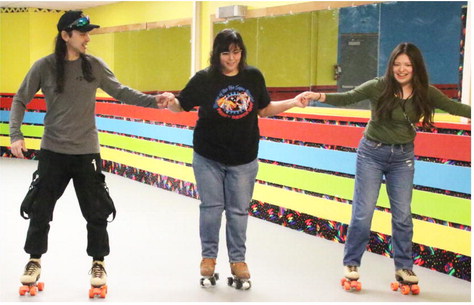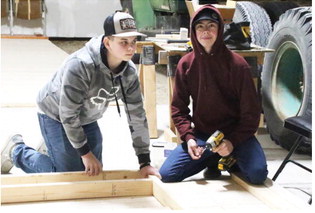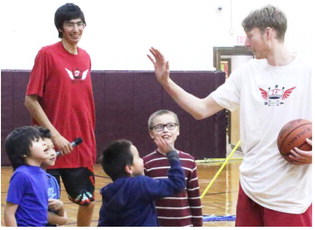Roosevelt County Learns Of First Resident COVID-19-Related Death, Tribes Go To Phase One
Monday evening, Aug. 17, the Roosevelt County Health Department issued a press release announcing the first Coronavirus-related death of a county resident. No age or gender were included in the press release.
Patty Presser, Roosevelt County Health Department director, stated in the press release, “We send our sincere condolences to the family and friends of this community member. We ask that Roosevelt County residents be vigilant in following guidelines that are meant to keep our community safe. The COVID-19 virus is in our community and is a very serious matter.”
As of press time Tuesday, Aug. 18 Roosevelt County has seven current active cases of COVID-19. Valley County’s active count was 11, while McCone County had no active cases. Phillips County has 32 active cases.
As of Monday, Aug. 17, there were 14 active cases on the Fort Peck Reservation, which includes cases in both Roosevelt and Valley counties.
The case count changes daily and all are encourage to visit the Roosevelt County Health Department’s Facebook page or call 653-6124 for confirmation of the official daily count to ensure compliance with the governor’s mask mandate. Both are updated by 11 a.m. daily.
The governor’s July 15 directive for counties with four or more active cases requires face masking in any indoor space, open to the public, is mandatory for people ages five years and older. For children 2-4 years of age, face coverings are strongly encouraged. A drape may be used for babies.
The governor changed his mask directive on Aug. 12 to include all public and private schools to require wearing masks in any county with four or more active COVID-19 cases.
County sheriffs and other law enforcement across the state have said that the mask mandate is not enforceable and violations should not be called into 911.
Fort Peck Tribes
The Fort Peck Tribes reverted to phase one Monday, Aug. 17, and the reservation-wide curfew is now 10 p.m. to 5 a.m. The tribes will remain in phase one for a minimum of two weeks.
Other restrictions under phase one include:
•Essential medical travel is allowed.
•Tribal casinos closed.
•Essential workers only (per director).
•Basketball hoops removed.
•All tribal buildings are closed to the public.
•Tribal hours of operation will be 10 a.m. to 2 p.m.
This decision, which only affects enrolled persons of any tribe living on the Fort Peck Reservation, was made by the tribal health board under a 7-0 vote. Members of the tribal health board are Kaci Wallette, Carla Payne, Charlie Headdress, Larry Burshia, Ray White Tail Feather, Kermit Smith and Dana Buckles.
In a Facebook post Aug. 11, Wallette shared information about pandemic relief assistance payments.
“TEB voted and approved of continuing the COVID-19 Energy Assistance payments to be $200 monthly until December 2020,” said Wallette. “We also voted to approve a second COVID-19 Relief Assistance Payment with the $650 per adult and $200 per child. No need to send in second application for either if you have already applied. Deadline will be Aug. 31, 2020, to apply. Second payment scheduled to be mailed out Sept. 21.”
Statewide
According to Montana health officials, 742 COVID-19 cases in the state were reported between Aug. 11 and Aug. 18. This bumped the state’s total number of known cases to 5,846 since the start of the pandemic. Around the state, 1,556 people are known to be currently infected, up 71 from Aug. 11. A total of 339 have been hospitalized with 97 currently hospitalized. A total of 4.206 people are listed as recovered, up from 3,542 on Tuesday, Aug. 11. By Tuesday, Aug. 17, 84 deaths had been reported statewide, up from 77 deaths Aug. 11.
Tests completed statewide over the past week numbered 11,100 with a total of 205,512 tests conducted statewide since the start of the pandemic. That testing number is down from 13,176 tests the week before. The 5,846 known cases results in an overall 2.8 percent positive test result rate.
Governor’s Press Conference
Gov. Steve Bullock discussed what it would require for Montana to advance to phase three during a press conference held last week. Montana has been in phase two reopening status since the start of June while dealing with Coronavirus. If Montana reaches phase three, there will be no limit on group size and all businesses can remain fully operational.
After saying he was asked about the possible path to phase three by a government official, Bullock noted that he sees only two ways to meet that goal. The governor said the first way is if a vaccine is developed. He added that work is being performed around the clock, but the vaccine still seems to be a long ways off.
The second way is for Montan- ans to learn to live with the virus in our presence. “We must live in a way that we recognize a significant risk is present, but understand how to live with the danger.” Bullock said an example of not living with the virus in our presence is Phillips County which went from no cases to 68 cases in a week. He explained there was an adult sporting event and then going to bars involved in the county.
Bullock urged residents to follow the request of Public Health by quarantining and isolating. “Public Health is working damn hard to protect all of us,” the governor said.
He said learning to life while following guidelines is the path to phase three. “That’s the only way we can get to phase three. And the only way for our schools to be open and remain open,” Bullock said.
The governor announced that students in both public and private schools will be required to wear masks in counties that have four or more active cases. “If we want our schools to open and want our economy to grow, we need to stride to reach the goal of phase three together.”
During the press conference, Bullock also announced that 80 percent of the CARES dollars received have been spent and $210 million are in the hands of Montanans. The business stabilization grant program will continue and businesses will be eligible for a second payment for three additional months. He said that $10 million in Coronavirus Relief Funds will be used to create a Live Entertainment Grant Program to assist the live entertainment industry.
MHSA
The Montana High School Association’s executive board met Aug. 13 and took the following actions: 1. The Board approved allowing each classification/ district/division to cancel non-conference games this season, if they so choose.
2. The Board approved the following addition to the MHSA face coverings policy: Cloth facial coverings are required for all players, coaches and officials. Face Coverings do not have to be worn during play, but substitutes must wear masks when not competing or per specific MHSA sport requirements. Face Coverings must be worn by players/coaches by rule, no matter the number of active COVID-19 cases in the county.
3. The board approved the following for the MOA:
• When necessary, because of a shortage of officials, two soccer officials can be used instead of three for varsity regular season contests.
• When necessary, because of a shortage of officials, four football officials can be used instead of five for varsity regular season contests.
4. The board approved a request from Class A to adjust football playoffs from 12 to eight teams and adjust playoff dates.
5. The board approved the following: Any MHSA activity participant who has been diagnosed with COVID-19 cannot return to play until he/ she is evaluated by a licensed health care professional, and has written clearance to return to play by both the county health department and a licensed health care professional.
Vaccines, Coverage Under Medicare U.S. Senator Steve Daines has sent a letter to Centers for Medicare & Medicaid Services Administrator Seema Verma stressing the need to ensure Montana’s vulnerable, elderly and disabled Medicare beneficiaries have the tools and treatments they need to stay healthy during the pandemic, including access to vaccines.
“As the current COVID-19 pandemic rages on around the globe, researchers are racing to find a vaccine to protect and prevent further morbidity and mortality as a result of this novel virus. Older adults and persons with chronic conditions such as heart disease, diabetes and lung disease are especially vulnerable to serious illness and complications from vaccine preventable disease,” Daines wrote. “Yet, Medicare coverage design for vaccines for these populations does not encourage access to this proven and cost-effective form of prevention. We urge the Centers for Medicare and Medicaid Services to take action to address this important issue.”
Immunization coverage for Medicare beneficiaries is segmented between Medicare Part B, which covers vaccinations against influenza, pneumococcal and hepatitis B for at-risk patients and Medicare Part D, which covers all other commercially available vaccines when deemed medically necessary to prevent illness.
While many patients receive Part B-covered vaccines with no cost sharing, Part D vaccines are typically subject to cost sharing requirements. This discourages immunization among elderly, disabled and chronically ill populations who account for especially vulnerable during these challenging times.


